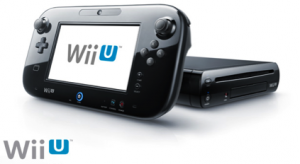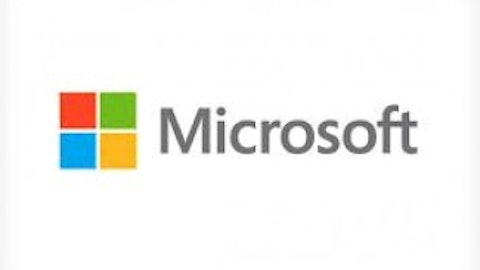
The video game industry, according to a report from Avista Partners, is expected to break $70 billion in game sales alone by 2015. It would appear that the game industry would be an easy haven for investment. That being said, there are some caveats that need addressing before investing.
Seven years later…
The Xbox 360, Wii, and Playstation 3 are massive revenue winners for their respective companies.
In its latest quarterly report, Microsoft Corporation (NASDAQ:MSFT) stated that the Xbox 360 increased revenue by 55% compared to the same quarter in 2012. Even though Xbox 360 is a system that is over seven years old, the console has managed to muster 290,000 sales within the last month, according to Wedbush analyst Michael Pachter, and a global sales total of around 75.2 million.
Sony Corporation (ADR) (NYSE:SNE) Playstation 3 has recently become profitable, partly due to the success of Playstation Plus, a value-adding service for Playstation 3 owners, which breached $1 billion in revenue in 2010. Despite being a six year old piece of hardware, Pachter estimated that 260,000 Playstation 3 units were sold in the month of March. Bringing the global total of Playstation 3 units to around 74.2 million sold.
Nintendo Co., Ltd (ADR) (NASDAQOTH:NTDOY)’s Wii, launched in 2006, has been a wild success for Nintendo Co., Ltd (ADR) (NASDAQOTH:NTDOY) and nearing 100 million units sold globally. From the start, Nintendo Co., Ltd (ADR) (NASDAQOTH:NTDOY) made money from every Wii sold. Flipping the conventional console-adage of, initially, selling hardware at a loss. With each unit sold adding to Nintendo Co., Ltd (ADR) (NASDAQOTH:NTDOY)’s coffers, Nintendo quickly became the second biggest Japanese company in late 2007, behind car maker Toyota.
While the predecessor to the Wii, dubbed Wii U, has already been launched, the Xbox 360 and Playstation 3 are still considered successful and provide decent revenue streams for their respective companies. With slow global recovery and uncertainty, the average citizen still struggles to make ends meet and with the low-end Xbox 360 selling for $180 and Playstation 3 selling at $250 (which comes bundled with two games), asking a parent to spend $400 – $500 for the Playstation 4 or next generation Xbox will be a tough sell.
Slow sales of next-gen products
If the past is any primer, then expect the sales of Sony’s Playstation 4 and Microsoft Corporation (NASDAQ:MSFT)’s next Xbox to realize slow sales numbers in the short-term. In 2011 and 2012, Nintendo and Sony released the next generation of handheld gaming devices with the 3DS and Playstation Vita, respectively. Both handhelds struggled to find an audience, despite each company’s previous handheld device selling well and a loyal install base. Sales figures for the 3DS have finally found momentum, selling 1.24 million within the last quarter; however, it has taken Nintendo 25 months to reach this point.
The same story is playing out for the release of Nintendo Co., Ltd (ADR) (NASDAQOTH:NTDOY)’s next generation console, Wii U, with dismal sales numbers since its launch in November 2012. Six months later, the Wii U has only sold 3.45 million units world-wide and only 390,000 units for the last three months.
AAA games: Unrealistic expectations
Not too long ago, it was a common standard that a game that sold over one million units was a blockbuster title and potential for a trilogy-esque exploit. That concept changed when Call of Duty: Modern Warfare launched in the fall of 2007. Call of Duty series sold so well that, with each new title launch, Call of Duty would be responsible for up to,$1 billion of that fiscal quarter’s revenue for Activision.
| Title | One Month Sales Figures | Revenue (5 days) |
|---|---|---|
| Call of Duty: Modern Warfare | 2.9 million | — |
| Call of Duty: World at War | 4.2 million | — |
| Call of Duty: Modern Warfare 2 | 11.2 million | $550 million |
| Call of Duty: Black Ops | 14.5 million | $650 million |
| Call of Duty: Modern Warfare 3 | 17.9 million | $755 million |
| Call of Duty: Black Ops 2 | 15.9 million | $1 billion* (15 days) |
Data gathered from ATVI Press Releases (here, here, and here) also from this article, here. Sales figures gathered from VGChartz. 5-Day revenue figures unavailable for Modern Warfare and World at War.
This set a new bar for developers. Each company wanted a game that had the best graphics, life-like animations, a huge marketing campaign, and developers assumed that this was the formula to sell multiple millions of copies. Sadly, this strategy only boosted the amount of units needed to break-even.
THQ, now defunct, released Homefront in 2011 to mixed reviews but sold well; however, for THQ to break-even on the game, Homefront had to sell over 2 million units. Months later, the developer behind Homefront would close its doors.
Recently, Japanese developer Square-Enix released a reboot of the Tomb Raider series, a 1990s gaming classic. The reboot released in March and was reviewed well, and sold over one million copies within the first 48 hours and almost 2 million copies a month later; however, management at Square-Enix expected sales to be in the range of 6 – 8 million copies within a month! Analyst Billy Pidgeon went on to estimate that Tomb Raider would need to sell over 5 million copies to break-even.
This focus on “sell big or bust” has hurt developers who have game concepts that would work on a smaller scale — where one million units sold would be profitable. Chris Roberts, a veteran developer working on a crowd funded PC game called Star Citizen, had this to say about state of the AAA game market,
You’ll still have these big blockbusters, and that’s going to be the domain of Electronic Arts, Activision Blizzard, Inc. (NASDAQ:ATVI), and Ubisoft… On the Activision Blizzard, Inc. (NASDAQ:ATVI) and EA scale of things they’re not getting out of bed unless they think it’s five million units, and they really want ten million or more. They probably lose money selling two million units. Whereas if I sell two million units I’m making a lot of money, for two reasons. I don’t have the same overhead and costs, and also I capture a lot more of the dollars.
If future consoles are to prove successful, Sony Corporation (ADR) (NYSE:SNE) and Microsoft Corporation (NASDAQ:MSFT) will need to open up their next generation consoles to the small/indie developers, Free-to-Play business models, and flexibility into their console model to lure in middle-tiered developed games.
Foolish bottom line
The console portion of the games industry is at a potential breaking point. Hardware manufacturers, Sony Corporation (ADR) (NYSE:SNE) and Microsoft, can no longer ride on the success of AAA games to lure in the both developers and customers. Allowing smaller developers and teams to release games that are economically viable at one million units sold would encourage business growth and diversity in games offered for consumption. As for the hardware — the hardware will have to do more than just play games; console will need to be THE center of living room entertainment.
David Henry owns shares of Microsoft. The Motley Fool recommends Activision Blizzard and Nintendo. The Motley Fool owns shares of Activision Blizzard and Microsoft.



